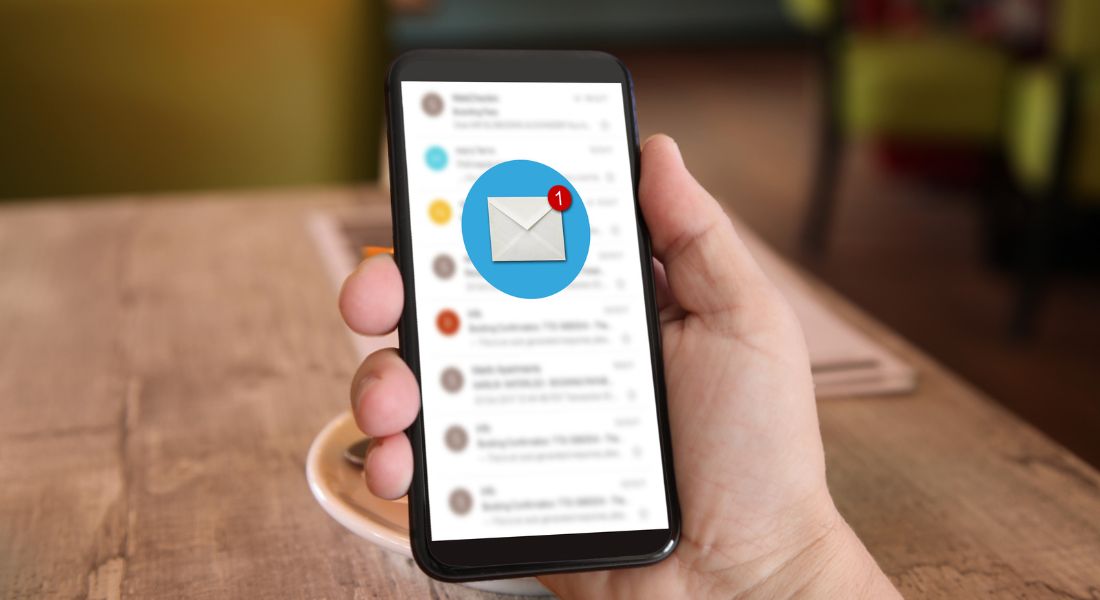You’ve poured time, effort, and resources into your email and SMS campaigns. You know they hold the power to capture and engage key audiences, but how do you measure their success? Are your efforts reaching, and impacting, the right people?
This post will help you understand the various metrics available to track and measure the success of your email and SMS campaigns, and how you can use that data to improve engagement and maximise ROI. Dig in and you’ll discover how to tailor your campaigns for whenever the success of your email and SMS campaigns matter the most.
Quick Insight
You can measure the success of your email and SMS campaigns by tracking metrics such as open rate, click-through rate, bounce rates, unsubscribes, engagement rates, and conversions. Additionally, you should evaluate user feedback to gain insight into how effective your campaigns are at engaging readers.
Post Contents
Toggle
Measuring Email Campaigns
Measuring the success of email campaigns is critical for businesses because it helps them evaluate the effectiveness of their efforts and decide where to allocate more resources. There are a few approaches that marketers can use to measure the success of their emails. The most common method is analysing open rates, which can be gauged by measuring the number of recipients who open an email as compared to its total reach. Click-through rate (CTR) is another way to measure how successful an email is, which refers to the percentage of people that clicked on any link in an email. Lastly, unsubscribes may be used as a metric since high unsubscribe numbers usually indicate that an email isn’t providing useful content or demonstrates potential problems with the frequency or quality of content being delivered in emails.
By looking at these metrics, marketers can make changes to their email strategy to improve its performance. For example, if an email has a low CTR, marketers may suggest improving its formatting or call-to-action phrases. Similarly, if too many people are unsubscribing from emails, there could be something wrong with the frequency or type of emails a business is sending out. By thoroughly measuring different facets of a campaign’s performance, businesses can gain insights that will help them refine and improve their approach.
Now that we understand how email campaigns can be measured for success, let’s review what goals and metrics should be set when designing and executing successful campaigns.
- According to a survey by Convince & Convert, open rates for email range from 10% to 30%. Meanwhile, click-through rates for email range from 1% to 5%.
- The average response rate for SMS is 45% which is much higher than that of email or direct mail as reported in a 2018 report by MobileMarketer.com.
- Data from Salesforce suggests that established companies can expect an average open rate of between 10%-40%, while click-through rates range between 0.2%-6%.
Most Important Points to Remember
Measuring the success of email campaigns is important for businesses as it allows them to evaluate their effectiveness and decide where to invest more resources. Open rates, CTRs, and unsubscribe numbers should be monitored in order to make changes that lead to better performance. Additionally, goals and metrics should be established when designing and executing campaigns in order to ensure success.
Goals and Metrics
When building a successful email or SMS marketing campaign, it is important to set realistic goals and metrics. When measuring email campaigns, some experts suggest that it should be more focused on engagement rather than hard values like opens and clicks; while others argue that the ratio of emails opened to those sent is more indicative of success or failure. It is important to consider both sides when setting goals.
For example, if a company sends out several emails in a week, but only one third of the people on the mailing list open that specific email, then an engagement goal like “increase the number of opens” can be easily defined. This could involve improving the subject line used and optimising the content so that it’s more engaging and persuasive to readers. On the other hand, one might instead focus on hard-value goals such as “reduce unsubscribes” or “increase clicks” rather than focus on engagement. Defining these hard metrics ensures that campaigns are effective in driving someone along the customer journey to make a purchase.
Setting goals and metrics is an ongoing process that should be monitored over time in order to ensure success in an email or SMS marketing campaign. By properly defining goals and metrics, you will have a good understanding of what works and what doesn’t so that changes and adjustments can be made quickly while also measuring improvements. The ability to look at data, interpret it correctly, and tweak accordingly is key to making an email marketing campaign successful.
Now that you have an understanding of how to measure the success of your email campaigns through clear objectives and quantifiable KPIs it is time to move onto statistical analysis. Statistical analysis allows for deeper dives into past campaign performance as well as an ability to create predictive models for future performance optimisation. Through proper analysis of data collected from your email campaigns you will be able to fine tune for improved results moving forward.
Statistical Analysis
When it comes to measuring the success of your email and SMS campaigns, statistical analysis often provides a clearer indication of how effective the campaigns have been. Statistical analysis can be used to determine an average value or set of values for various metrics you are tracking, such as the open rate or click-through rate. It can also give greater insight into why certain metrics performed better than others, allowing you to make strategic adjustments to future campaigns.
That said, statistical analysis is not without its flaws. For instance, it may not be able to capture all of the nuances that are associated with different types of campaigns and messaging styles. Additionally, statistical analyses don’t always reflect what was actually felt by the target audience and consequently ignored or underrated sections of your campaign might fail to get noticed in the results.
Overall though, statistical analysis gives marketers a valuable tool for both understanding key performance indicators and optimising campaigns in order to maximise their success. Armed with this information, marketers can have more confidence when designing future email and SMS campaigns that they will achieve the desired outcomes. With this in mind, it is time to shift focus and turn our attention towards effectively measuring SMS campaigns specifically.

Measuring SMS Campaigns
Statistical analysis is useful for understanding how successful an email campaign was, and the same can be applied to SMS campaigns as well. To measure the success of an SMS campaign, look at metrics such as delivery rate, open rate, click-through rate, spam complaints and unsubscribes. As with emails, these are important in measuring whether the message reached its intended recipient in a timely manner.
For more detailed insights, however, it also pays to take a closer look at the content itself. Were there any particular words or phrases that sparked engagement? Analysing sentiment from responses can help you to understand what kind of language or keywords determine the efficacy of an SMS campaign. It could be that there is a particular tone of voice that resonates with your audience or that some specific calls to action have a bigger impact than others.
It’s not enough just to analyse data; context matters too. Speak to your customers directly and find out what makes them tick and why they respond favourably to certain kinds of campaigns. Ultimately, what matters most is creating a connection between your message and its target audience in order to ensure that they respond in the way you intended them to.
By understanding the various statistical factors and user experience elements associated with SMS campaigns In combination with powerful data from analytics tools, marketers can gain valuable insights into not just how well their messages are performing but also what makes them succeed (or fail). With this knowledge, you can then begin to refine your strategies for even better results going forward— setting up your next campaign for success before you even press send.
To truly understand both the quantitative and qualitative aspects of an SMS campaign’s performance requires examining not only basic metrics but also key statistics related to engagement such as open time, replies or interactions like forwards or shares. Plus, exploring other variables such as geographic location and demographics can provide helpful insight into who’s engaging with which kind of message. Armed with this knowledge about what works best among different recipients means you can start optimising for greater returns from every SMS blast sent out in the future.
Ultimately though, while metrics are helpful in providing direction for improvement, treating each metric in isolation isn’t necessarily enough either: combining disparate statistics together allows you to get a better understanding of the bigger picture behind why users responded positively or negatively towards your SMS campaign and allows everyone involved in evaluating it can work together on improving it further for maximum impact moving forward. By taking a holistic approach focused on both engagement metrics and statistics you will be able set yourself up for better long-term success when designing future SMS campaigns.
Statistics and Engagement Metrics
Statistics and Engagement Metrics are essential ingredients for measuring the success of any email or SMS campaign. By way of these metrics, businesses and organisations are able to gain insight into the likes and dislikes of their consumers, and make informed decisions about their marketing tactics moving forward. For SMS campaigns in particular, there are several key engagement metrics to pay attention to.
The open rate refers to the percentage of people who open a text message after it has been sent. A good open rate is considered to be 50% or higher, and this can be achieved through sending texts that pique recipients’ interests. Short, humorous, and personalised messages have a greater chance of being opened. Additionally, offering discounts and incentives within the text message copy can also help increase open rates.
The click-through rate (CTR) is another key metric for SMS campaigns, as it tells you the percentage of people who clicked on a link or image within the text message. With most short messages containing limited text coupled with a link prompting users to find out more information online, achieving a high CTR is important – allowing customers to access your online store quickly and easily.
A/B testing various approaches may provide insight into which methods produce more desirable results such as an increased open rate or CTR. For instance, analysing variables such as when you send the message (e.g., late night vs early morning) or perhaps what type of language you use could make all the difference in reaching your target audience effectively.
All in all, understanding key engagement metrics and gathering data around them can help you get a better handle on how successful your SMS campaign was. This useful information will prepare you for the next step in measuring success: integrating the campaign with apps that monitor responses to determine customer sentiment.

Integrating the Campaigns with Apps
Integrating campaigns with apps is an important tool for businesses to measure the success of their email and SMS campaigns. By connecting notifications, emails, or SMS messages directly to a user’s mobile app experience, businesses can get the full picture of user engagement from both online and offline channels. Android and iOS platforms both offer powerful tools that allow integrations between campaigns and apps. Through these integrations, businesses have access to a vast array of metrics in order to better monitor user engagement. Some examples of metrics that can be obtained through such integration include open rates, active device count, and total impressions for notifications or SMS messages.
Integrating campaigns with apps, however, does come with its downsides. For example, two separate development teams might need to be working together to integrate. This could lead to increased resources being utilised as well as long-term costs if the projects aren’t managed correctly. Additionally, customising the integration to fit the needs of a specific business case can also be difficult and time-consuming since it requires detailed coding work — something best left to skilled developers who may not always be available.
All in all, while integrating campaigns with apps can prove to be beneficial for tracking user engagement and measuring the success of email and SMS campaigns, the potential downsides must also be considered before taking on such a venture. Having an understanding of these potential issues ahead of time will allow businesses to make wiser decisions when it comes to campaigning and app integration. With that being said, when done correctly integrating campaigns with apps can bring valuable insights into how audiences are reacting that enable businesses to adapt in real time and continue achieving their goals. To measure the true success of these efforts though, it is often necessary to dive deeper into the data itself which leads us into our next section focusing on more granular measurements of success through detailed analytics.
Measuring Success
When it comes to measuring the success of your email and SMS campaigns, there is a lot of data that can be collected. Data such as open rates, click-through rate, response rate, relevance score, unsubscribe rate, and more must all be taken into account when judging the success of the campaign.
Integrating these campaigns with apps can help to further measure the success and gain insights about customer behaviour. Analysing how frequently certain products are purchased, how often people are engaging with an app or website, and what they liked or disliked about different offers or promotions can all help to measure campaign success. These insights are valuable for evaluating engagement levels and adjusting marketing plans to best meet customer needs.
When discussing success, it is important to consider both quantitative and qualitative metrics. While quantitative metrics such as open rates, clicks per message, and conversion percentages can provide data-driven insights into campaign performance, qualitative measures which look at customer satisfaction surveys and sentiment analysis should also be taken into account .For example, an explicit customer survey would give insight into the perceived effectiveness of the campaign on a qualitative level rather than looking solely at metrics like open rates.
Overall, integrating emails and SMS campaigns with apps gives marketers invaluable access to both sides of the equation – the quantitative side that looks at metrics like open rates and clicks per message plus the qualitative aspect which looks at customer sentiment. This combination of insights provides a comprehensive look at how successful an email campaign was and allows marketers to make adjustments based on critical feedback from customers.

Responses to Common Questions
What are best practices for tracking and analysing email and SMS campaigns?
Best practises for tracking and analysing email and SMS campaigns include:
1. Monitoring the performance of each campaign in terms of open rates, click-through rates, and conversion rates. This allows you to see how successful your campaigns are in terms of driving the desired results.
2. Collecting feedback from customers on their experiences with the messages you’ve sent. This can provide context around why certain messages may or may not have been effective.
3. Using A/B testing to optimise your content, if available. A/B testing allows you to test variants of the same message before sending it out to your full list, helping to maximise response rates.
4. Analysing data over time to identify trends and insights that can inform future campaigns. By understanding what has worked in the past, you can craft future campaign plans more effectively.
How can I use data to optimise my email and SMS campaigns for better results?
Data-driven optimisation of email and SMS campaigns offers powerful insights into customer behaviour and can be a great way to improve your marketing results. To use data to its fullest potential for optimising your campaigns, you should pay close attention to metrics such as open rates, click-through rates, engagement rates, unsubscribers, bounce rate, list growth rate, deliverability rate, and more. Regularly tracking and analysing these metrics can help you identify weak points in your campaigns and can let you precisely refine the content and targeting for optimum success.
For example, understanding the demographic information associated with high engagement or open rates on emails or messages can help you laser target YOUR customer segments/audiences. You can also take advantage of A/B testing methods to understand what subject line, content format, timing and other variables work best in getting the desired customer action from your campaigns. By strategically utilising the quality data insights you gain through these approaches you can better tailor your messages to resonate with each customer segment and increase the effectiveness of your campaigns moving forward.
What metrics should be used to evaluate the success of email and SMS campaigns?
Successful email and SMS campaigns require careful evaluation of metrics in order to measure how successful they are. Metrics such as open rate, click-through rate, conversion rate, unsubscribe rate, abandonment rate, and spam complaint rate are all important in measuring the effectiveness of messages sent via email and SMS.
Open rate measures how many emails or text messages were successfully delivered to their intended recipients. Click-through rate provides insight into the number of people who followed a link from an email or text message to a website or landing page. Conversion rate indicates how effective an email or text message was at encouraging action from its recipients. Unsubscribe rate shows the percentage of people who have decided to opt out of an email list after receiving a message whereas abandonment rate tracks how many people left a web page before completing a task even if they were directed there from an email or text message. Lastly, spam complaint rate gives an estimate of how likely your content is to be flagged as unwanted mail by mail systems.
By evaluating these key metrics, businesses can gain insights into their customer’s behaviour which will help them improve future campaigns.




